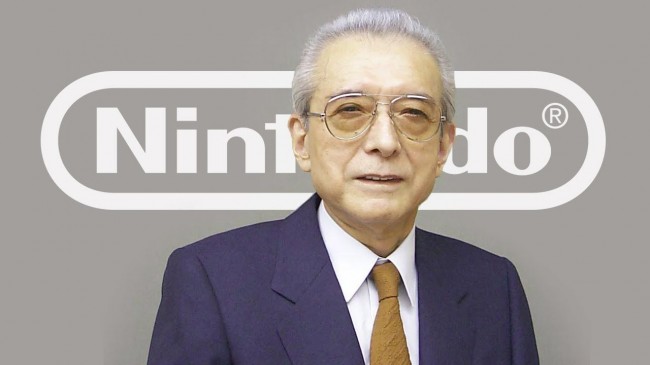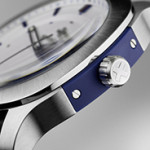The man who made video vames big business
For some, video games and the name Hiroshi Yamauchi may mean little. Apple’s Steve Jobs is more likely to spring to mind as a genius creator. Yamauchi, who died on September 19th aged 85, didn’t like or even play video games. However, from the 1970s onwards the diminutive Japanese businessman transformed Nintendo from a small business into a global icon. His influence is greater even than this; he took the video game medium and launched it towards the multi-billion dollar global industry we know today.
It is his business practices which spearheaded this success. Utilising a mixture of intuition, creativity, and occasionally savage business acumen he sent Nintendo to the top of the world. Through diligent methods he also amassed a fortune worth $2.1 billion, making him the 13th richest man in Japan. For a company with such small beginnings, the transformation is a remarkable achievement. Here’s a brief history of an amazing man and his business ethics.
Small Beginnings
Hiroshi Yamauchi was studying at Waseda University in 1947 when he got the call to join the family company, which at the time specialised in making playing cards. Young and inexperienced, Yamauchi nonetheless rose to prominence in 1949 at the behest of his grandfather. He was company president of Nintendo in his early twenties, a promotion resented by long-term employees. It wasn’t long before they went on strike; refusing to defer, Yamauchi fired the staff who questioned his authority. It was the brutal decision-making of a man who knew how he wanted to run his business.
Over the following decades he led the company on several unsuccessful business experiments which almost caused bankruptcy. However, once Yamauchi brought engineer Gunpei Yokoi’s creative mind to the fore, Nintendo found its true calling. With Yokoi’s highly imaginative toys proving to be a hit the transition was complete — Nintendo were officially into entertainment only. With a technological revolution around the corner, Nintendo were now poised to make their move.
Making History
As technology in the ’70s improved, Yamauchi made one of his most prescient decisions. Realising entertainment could be part of electronic products he began experimenting with the burgeoning video game industry. Initial efforts proved reasonably successful and Nintendo produced Arcade Games and the Game and Watch franchise. Radar Scope, Space Fever, and Sheriff were minor hits in Japan, and with this new found success the company expanded to America. The games did not prove to be a success in the US, which left Nintendo once again facing financial collapse. A star games developer was needed.
In 1977 Yamauchi had realised the potential of a young designer named Shigeru Miyamoto. He took a risk in 1981, with the company facing its second major fiscal disaster, and let Miyamoto design what became Donkey Kong. An enormous hit, the game also prompted the attentions of Universal City Studios. They claimed Nintendo had breached their copyright on King Kong and launched a lawsuit. This backfired disastrously when American courts ruled the King Kong franchise was in the public domain, and that Donkey Kong clearly did not impinge on the King Kong film. Suitably shamed, Universal Studio’s mistake is often selected for one of the most embarrassing moments in gaming history.
With this potential disaster skilfully averted, Yamauchi continued bringing in a talented team of creative minds. In particular, the pairing of Miyamoto and Yokoi would earn the company their reputation under Yamauchi’s leadership. By 1983 Nintendo was way ahead of the field; the president had launched three R&D departments who competed for innovation, excellence, and Yamauchi’s blessings. This company leadership was matched with an industrial development process, and an intuitive awareness of what would enthral the public. The Famicom (Nintendo Entertainment System – NES) launched in 1983. By 1985 it made it to America, and it was in Europe from September 1986. It was a sensation, and Miyamoto’s landmark games (Super Mario, The Legend of Zelda) easily stood out in the gaming world. Meantime, Yokoi’s invention the Game Boy (when matched with the official rights to Alexey Pajitnov’s Tetris) was launched in 1989 to staggering global success. Whilst facing some competition from rivals Sega and their character Sonic, Nintendo moved to crush them with the release of the NES’s successor. The Super Nintendo (SNES) was released in 1990 and was another phenomenal hit, allowing Nintendo to dominate the industry up until 1995.
It had been a meteoric rise to success, but such crushing domination rarely lasts. From 1996 onward Nintendo has been succeeded in popularity by the likes of Sony and Microsoft, but the company’s N64 and Gamecube consoles were critically well regarded. The creation of Pokemon maintained its global icon status, and the series continues to be a major hit for the Game Boy. Since Yamauchi’s retirement, Nintendo has released the very popular Wii and 3DS (a development of the Game Boy). The Wii U is their most recent console, and it launched the Next Generation console battle. Slow sales aside, it is the usual merger of creativity and outright escapist fun, matched with new technology to inspire the industry.
Legacy
Always one to push for genuine excellence with products, Yamauchi also made the unusual decision it was artists who made excellent games, not technicians. Shigeru Miyamoto proved him right. Despite having no engineering background, and what you’d expect to be a pertinent dislike of video games, it was Yamauchi alone who decided which games would be released. This innate knowledge of what would drive the public wild turned Nintendo into a world famous brand.
Although he retired in 2002, the legacy he has left behind is indelible. Video games simply would not be what they are today without his endeavours. Millions would not be playing on Grand Theft Auto 5 right now, the Xbox One would not be just around the corner, and the industry would still be mired in a “geeky” image, rather than being the billion dollar earning trend it has become. However, Yamauchi, above all else, should be remembered for striving towards perfect products and customer service. An example of this is the NES’s customer support line, which ran for 24 years, long after the console was obsolete! These attributes will certainly never be forgotten by Nintendo.
By Alex Morris
Source: AllBusiness









